
Page 1 The life of Mère Thérèse, La Baronne de Vaux
Page 2 Book Review by Méabh Ní Uallacháin
Page 3 The Story of John Casey by Margaret Mary Joyce
Page 4 Our Deceased Sisters and Acknowledgements
Page 5 Birthday Celebrations
On 7th Feb 1800 Thérésia de Cabarrus Tallien gave birth to the first of the four children she would have with Gabriel-
Over the next editions of Seo agus Siud we will be retelling the story of the life of Mère Thérèse based on the text from Mairin Barrett’s book, Mère Thérèse (1983), and also Jehanne Aubry’s book Une Fille de Madame Tallien, La Baronne de Vaux (1935) with additional historical background and images researched by Barbara McArdle
Thérésia lived there until her marriage in 1805 to the Comte de Caraman, later to become the Prince de Chimay. And afterwards it was used by the couple as a Parisien base. The Chimay family sold the property in 1840, five years after Thérésia’s death. It was bought by the Marquis de Chanaleilles and has been known as the Hôtel de Chanaleilles ever since. Over the years, much of the land attached to the grand hôtels of the area was sold off for redevelopment. New streets were created to allow access to newly built appartment blocks. What would have been the avenue leading to Thérésia’s property became the rue Vanneau, and cut up the side of Thérésia’s property to link with the rue de Varennes with the rue de Babylone. Another new street cut across the front of the property and was named rue de Chanaleilles after the then owner of the propetry. The Hotel de Chanaleilles now lies behind high walls at the corner of rue Vanneau and rue de Chanaleilles. The map below dated 1850 shows the new streets of rue Vanneau and rue de Chanaleilles
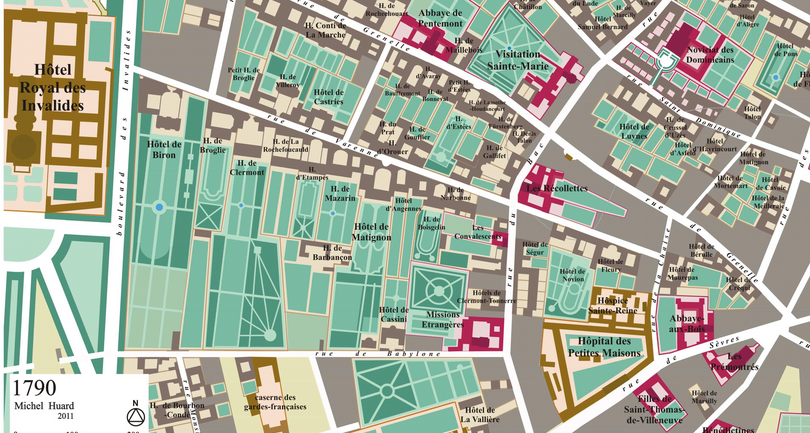
The Hôtel de Chanaleilles without its land and gardens is now in private ownership and surrounded by high walls. It has been extensively restored and also extended. The website The Devoted Classicist has some photographs of it before and after restoration. While not depicting the residence as it was in Thérésia’s time, the images can nevertheless give us some idea of what it looked like. This is where the young Clémence would have lived during her holidays from the Choisel nursery and her boarding school.
When Clémence was born, Thérésia was then living in the bijoux residence at rue de Babylone which had been presented to her the previous year by Gabriel-
Two of the grand hôtels of Thérésia’s day have retained most of their gardens. The Hôtel Biron is now the Rodin museum and the Hôtel Matignon is today the official residence of France’s prime minister.
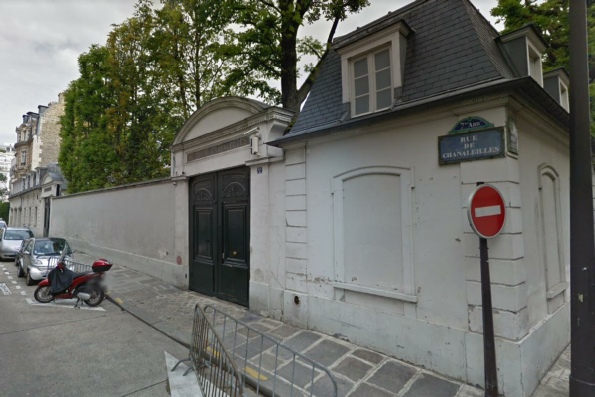
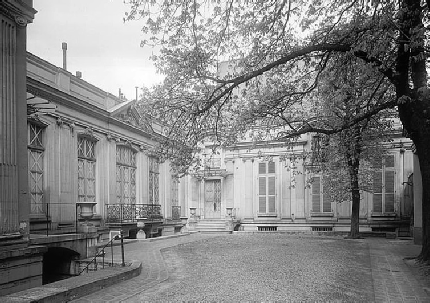
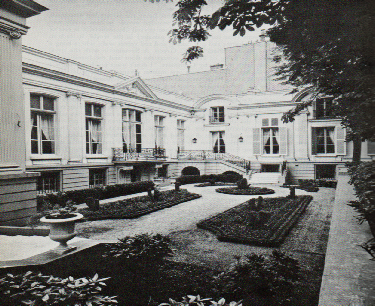
Clémence’s early years were spent in the nursery run the the Choisels in boulevard des Invalides. just round the corner from the rue the Babylone. In the four years after Clémence’s birth, a brother, Jules Adolphe Edouard, and then two sisters, joined her in their nursery. Her two younger sisters were named Clarisse Gabriel Thérésa, and Stéphanie Caroline Thérésa As the Choisel’s house was just round the corner from the rue the Babylone, her mother could easily have Clémence and her three siblings brought round to her residence on visits.
When Clémence was six years old, her mother withdrew her from the nursery and sent her to finish her education at the convent boarding school, Abbaye-
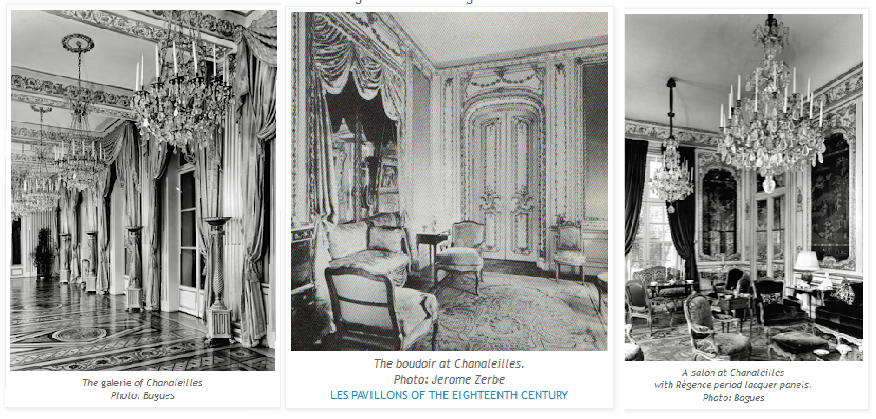
Mairin Barrett tells us: “In pre-
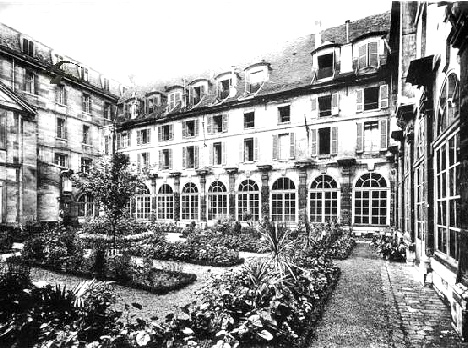
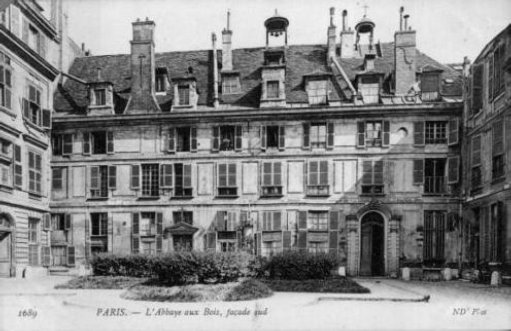
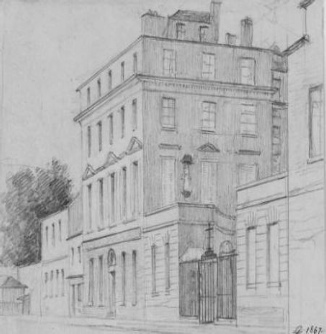
The garden pictured here was where Clémence would have played, walked and prayed. When the buildings of the Abbaye were demolished at the beginning of the 20th century to make way for the enlargement of the rue de Sèvres, a small garden square was constructed in the midst of the new configuration of apartment blocks and a new street. It was named, as was the new street, after Mme Recamier, a famous literary socialite who took up residence in the Abbey in 1819 two years after Clemence had left. The square, a delightful green oasis among the busy streets and now renamed square Roger Stephane is hidden down an entry from the rue de Sèvres. This square possibly contructed on the site of the original garden is all that remains of the Abbaye aux Bois.
We finish this chapter of Clémence's life with a direct excerpt from Mairin Barrett’s book describing Clémence's education in the Abbaye aux Bois:
The education Clémence received there was typical of what was considered fitting for the daughters of well-
In terms of our modern educational requirements Clémence's schooling might appear sketchy and inadequate but for her own day it was considered sufficient by most educators. Louise Humann, who during the very years Clémence was in school was running a highly successful educational establishment, would not have agreed but she was exceptional in her devotion to learning and in her expectation of what girls could achieve. Clémence was not particularly academic-
In the school holidays when Clémence went home, her education in the art of mingling in polite society continued. Her mother's salon was famous and even when she and her husband moved permanently to Chimay, people still liked to be invited to her soirées. Clémence evidently enjoyed these functions and once she was considered old enough to do so she was allowed to attend. Later on when she had her own house, she too had a well-
(To be continued)
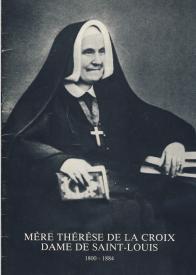
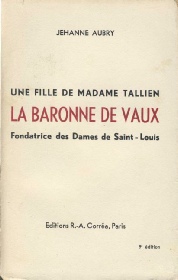
The Comte de Senonville was to write to Clémence 27 years later declaring his everlasting gratitude to her mother and flamboyantly reminding her that he had been “restored to life before her great black eyes had even seen the light of day.”
Below is an extract from the Registry of Births for the 10th arrondissement in Paris detailing Clémence’s birth.

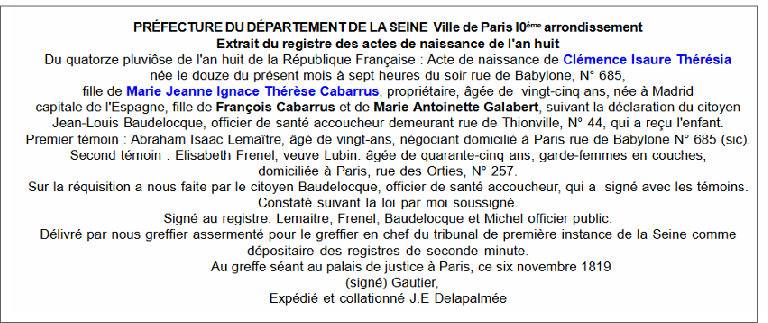
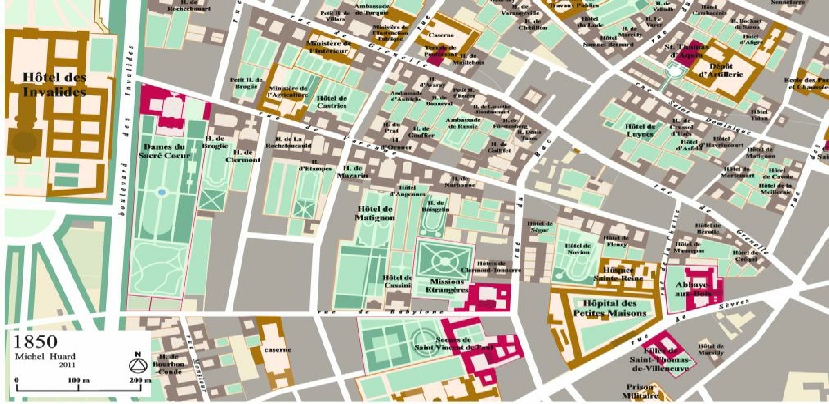
Hotel de Barbançon given to Mme Tallien in 1800
rue de Babylone
Boulvard des Invalides where the Choisel Nursery was
Abbaye aux Bois where Clémence went to school
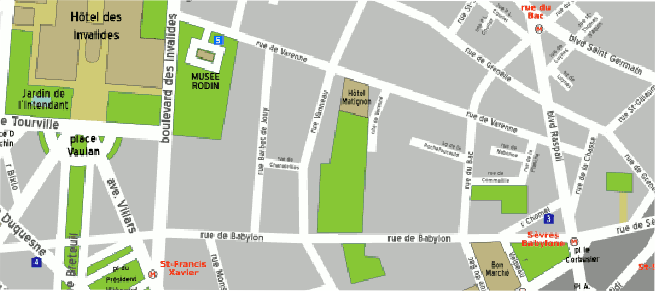





rue Vanneau
Hotel de Chanaleilles
rue de Chanaleilles






Map of the Faubourg Saint-